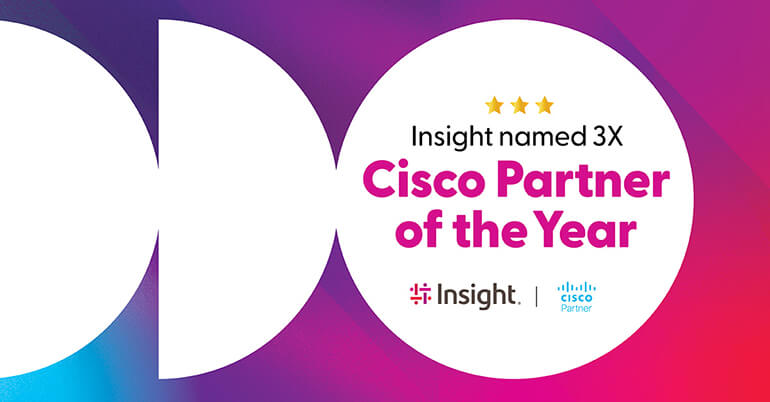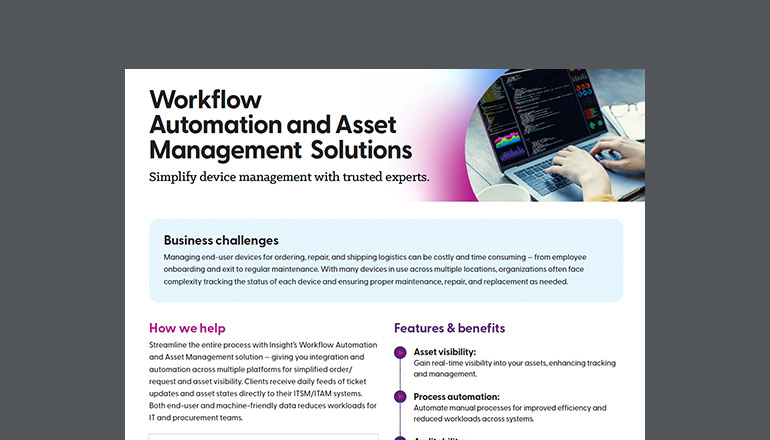Article The Top 3 Advantages of Hyper-Converged Technology
By Insight Editor / 6 Apr 2016

Hyper-Converged Infrastructure: A Shape Of Things To Come
Hyper-converged infrastructure (HCI) technology is beginning to gain traction among IT professionals as an effective all-in-one virtualization solution. While it’s still relatively in its infancy, the idea of a single physical appliance that combines storage, servers, and network—managed through a high level of software automation—is difficult to resist.
The data shows that while there is already a fair amount of adoption, the technology enjoys plenty of room for growth. According to a survey of almost 550 IT professionals conducted by Actual Tech Media and Hewlett Packard Enterprise, 33% of respondents have deployed hyper-converged infrastructure, while 46% are considering it.
While it’s far from mainstream, Gartner analysts predict the technology will grow 79% to reach almost $2 billion in sales, making it one of the fastest-growing segments of the integration market.
Virtualization is the cornerstone of hyper-converged. VDI products such as HPE Hyper-Converged 380 offer a wide variety of benefits to organizations looking to making their IT operations run more efficiently.
So how exactly does it do that? What are the main advantages of deploying an HPE hyper-converged infrastructure?
Why Hyper-Converged Technology?
Deploying an HPE hyper-converged system provides multiple benefits to medium-sized and enterprise-level organizations. It’s a highly-effective tool for the following reasons.
1. Reduce Costs
HCI allows your organization to realize substantial cost-savings on several fronts. It reduces the need for capital expenditure on hardware and software; helping you save on resource costs.
By its very nature, hyper-converged environments reduce overhead costs thanks to its lessened reliance on discrete network hardware components. No longer will separate servers, virtualization software, hypervisors, and network configuration tools need to be acquired.
For example, the HPE Hyper-Converged 380 allows you to put a system in place with a single two-node appliance, reducing your need for separate hardware servers and storage units. This provides unheard of financial flexibility and scalability. As your needs grow, since the all-in-one approach to the HCI, appliances will ultimately result in fewer hardware purchases.
There’s no requirement for costly SAN storage. Thanks to the software-defined storage, you’ll gain SAN-like capabilities without the price tag. In addition, the technology negates the need to buy separate virtualization software.
These savings extend through to other areas. Due to its ability to support higher user density, the configuration results in a significantly lower cost per seat. And, with HPE’s Cloud Optimizer tool, you’ll gain up to 90% more efficiency in the consumption of your resources.
Hyper-converged technology offers many cost-savings benefits due to reduced hardware and software requirements, increased flexibility and a lower cost per user.
2. Streamline IT Operations
One of the great aspects of hyper-converged technology is its inherent ease of use, allowing network operations to be managed, in many cases, by a single IT generalist. Consequently, a dedicated team of specialists is usually not required to run a hyper-converged network.
HPE refers to its Hyper-Converged 380 appliance as a “VM vending machine,” making it simple for IT staff to deploy VMs quickly. No specialized training is required to operate the system, and virtual machines can be deployed in as little as 5 clicks.
It also lets you reign-in virtualization sprawl. Effectively control multiple VM interfaces without worrying about the issues inherent in excessive deployments. Hyper-converged is ideal for companies with multiple satellite offices.
Hardware and firmware updates can be quickly and easily accomplished through the highly intuitive HPE OneView interface. With semi-automated software to oversee and manage operations, the user experience increases exponentially.
The lack of discrete network components means that IT personnel can transition away from creating and managing automation tools for disparate hardware configurations and let the built-in hypervisor software take charge.
Simple to operate and manage, a hyper-converged strategy is one of the best options for streamlining IT operations; thanks to the software-based management architecture and the reduced need for specially-trained personnel.
3. High Availability
A clustered configuration of hyper-converged nodes provides incredible system stability due to the robust failover functionality built into the system. A failure in a single node can easily be compensated by another without additional hardware requirements.
In that light, HCI offers robust backup and recovery, as well as disaster recovery—that HPE’s hyper-converged solution is pegged at costing 62% less than traditional DR.
HPE Hyper-Converged 380 boasts an uptime of 99.999% at setup, thanks to the shared resources and mixed storage type, in each appliance, that improves performance and capacity.
With its centralized software-based approach to data management, hyper-converged brings with it improved efficiency, resulting in a higher overall availability rate.
So while hyper-converged technology is still in its early stages, the benefits to an organization are clear. Cost savings, streamlined IT operations and increased system availability are hallmarks of this impressive technology.
Insight partners with HPE to provide hyper-converged solutions to businesses. Contact us to learn how our hyper-converged solutions can help your organization operate more effectively and prepare for the future.





